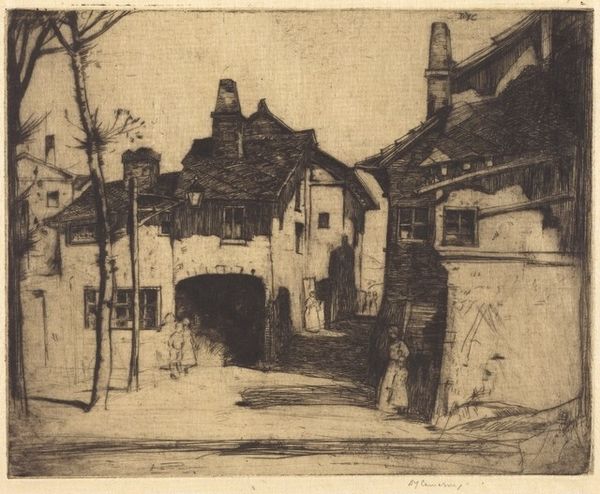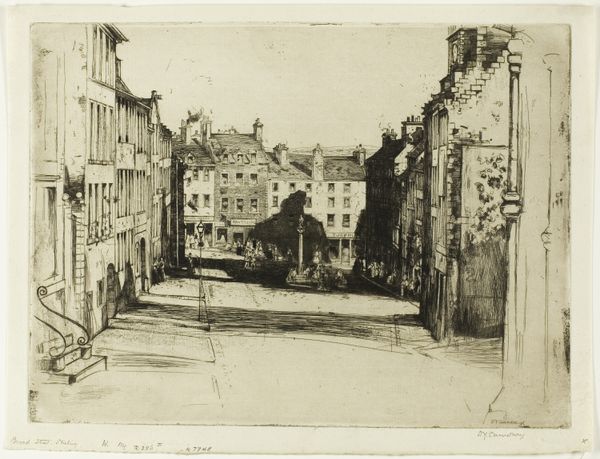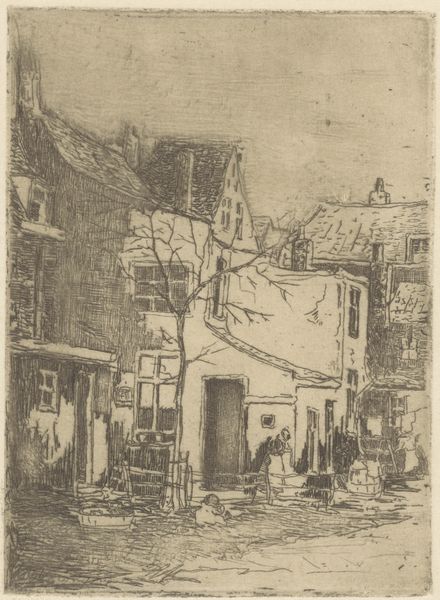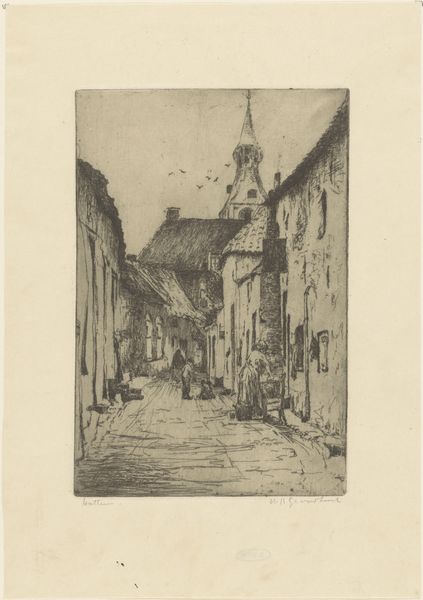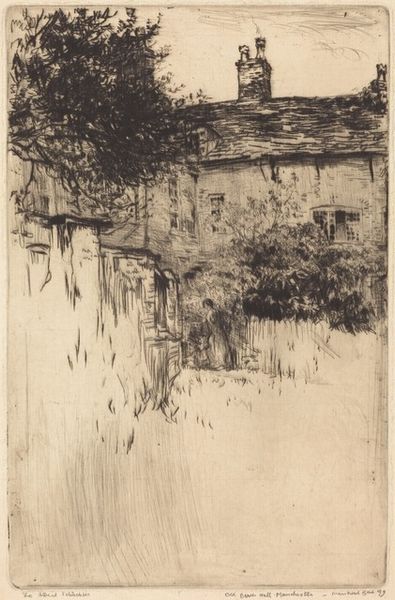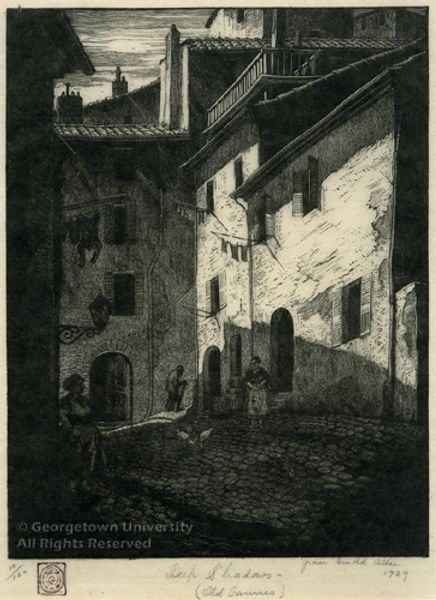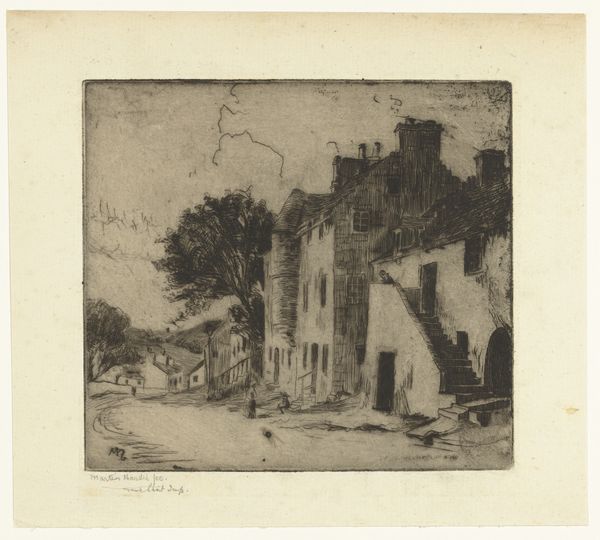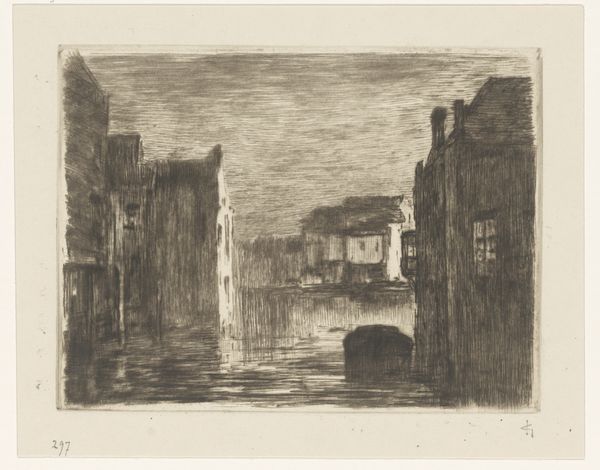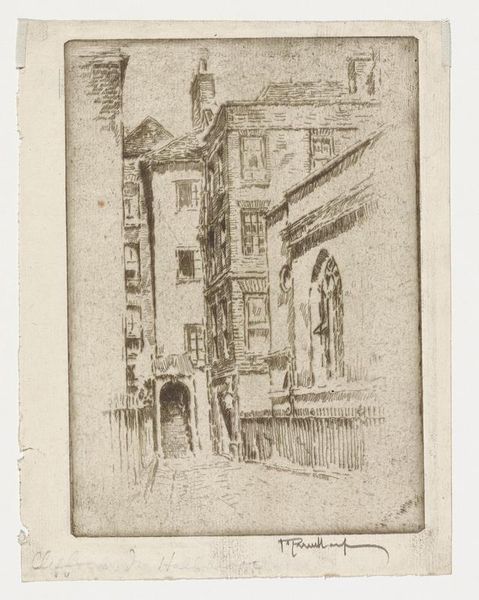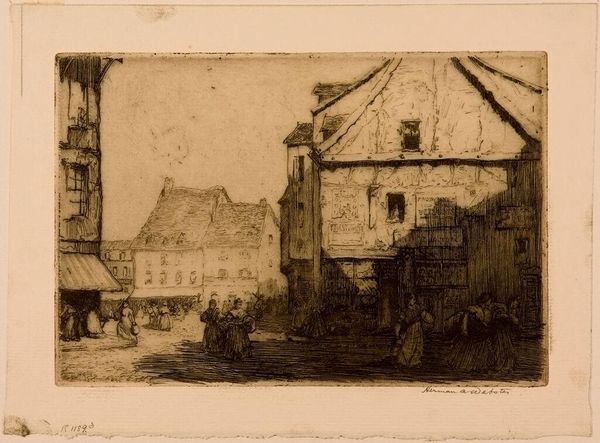
print, etching
# print
#
etching
#
landscape
#
cityscape
#
realism
Copyright: National Gallery of Art: CC0 1.0
Curator: Here we have David Young Cameron’s etching, "Haddington," created in 1903. It’s a beautifully rendered city scene, focusing on a street view in the Scottish town of Haddington. Editor: It feels so quiet, almost secretive. The tonality, the depth of the blacks—it imbues the scene with an almost melancholic air, as if holding on to centuries of memories. Curator: Absolutely. Cameron was deeply invested in capturing the spirit of place. This wasn’t just about topographical accuracy; it was about evoking the mood, the atmosphere of a specific location and its cultural weight. Note the architectural details - the prominent tower on the corner building, rendered with painstaking detail, looms with a quiet strength that dominates the image. Editor: The way the artist uses the etching technique to create shadows is particularly effective. Look how the darks cluster along the base of the buildings and on the cobblestones, drawing your eye down the street. Are there people there? Curator: Yes, you can discern several figures – tiny forms amidst the architectural mass. Their presence brings the scale of the architecture into focus. What stories do you think those figures carry with them through these old streets? It emphasizes how public spaces function. Who is permitted in the space and at what hour? Editor: Their indistinct forms suggest the enduring continuity of everyday life, like ghosts fading into stone. As an etching, what drew Cameron to printmaking at this stage of his career? And do you feel like "Haddington" has anything to say about the role of art in public life? Curator: Cameron was part of the etching revival, and he excelled in this medium, pushing its capabilities to express subtle tonal variations and textures. The choice of subject matter—a historic town—links to the Arts and Crafts movement and the desire to preserve local heritage amid industrial expansion. These prints were relatively accessible. Therefore, I'd imagine that they provided widespread engagement with and celebration of local heritage. Editor: It certainly offers a glimpse into a specific time and place. A somber snapshot of Haddington. What remains from 1903, and what has fallen to progress? Curator: In that respect, the image captures how art bears witness to societal transformation and asks to ponder about how time shapes identity. It makes the etching relevant far beyond just representing a historical place.
Comments
No comments
Be the first to comment and join the conversation on the ultimate creative platform.
